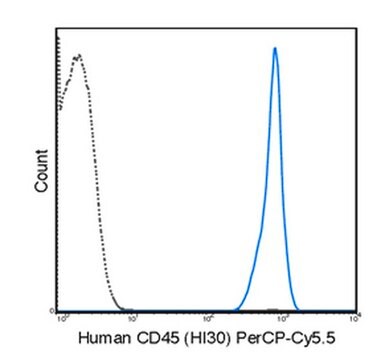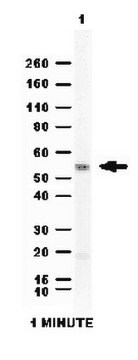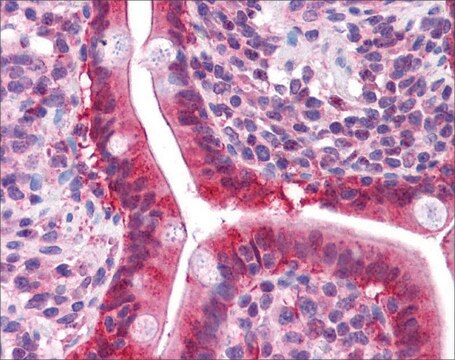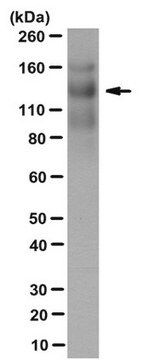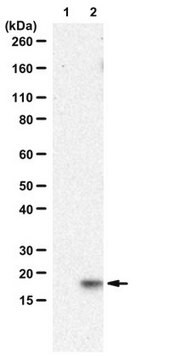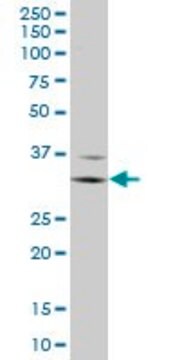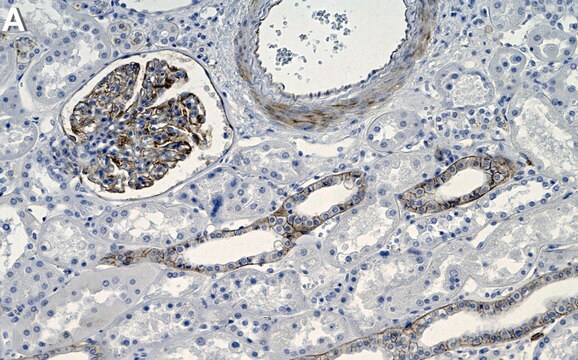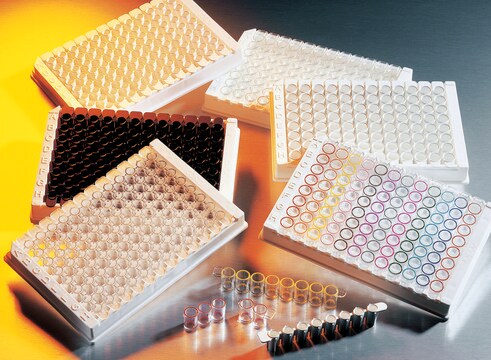ABS1653
Anti-GSTT1 Antibody
serum, from rabbit
Synonyme(s) :
Glutathione S-transferase theta-1, Glutathione S-transferase T1-1, GST class-theta-1, GST T1-1
About This Item
Produits recommandés
Source biologique
rabbit
Niveau de qualité
Forme d'anticorps
serum
Type de produit anticorps
primary antibodies
Clone
polyclonal
Espèces réactives
rat, human, mouse
Technique(s)
immunohistochemistry: suitable (paraffin)
western blot: suitable
Numéro d'accès NCBI
Numéro d'accès UniProt
Conditions d'expédition
dry ice
Modification post-traductionnelle de la cible
unmodified
Informations sur le gène
human ... GSTT1(2952)
Description générale
Spécificité
Immunogène
Application
Signaling
Oxidative Stress
Western Blotting Analysis: A representative lot detected significantly upregulated GSTT1 levels in liver cytosolic preparations from rats on a selenium-deficient diet (McLeod, R., et al. (1997). Cancer Res. 57(19):4257-4266).
Western Blotting Analysis: A representative lot detected recombinant human GSTT1, as well as endogenous human GSTT1 in multiple tissue samples from four deseased individuals (Sherratt, P.J., et al. (1997). Biochem. J. 326 (Pt 3):837-846).
Immunohistochemistry Analysis: A representative lot detected differential GSTT1 immunoreactivity among liver cells in formalin-fixed, paraffin-embedded human and mouse liver tissue sections (Sherratt, P.J., et al. (2002). Toxicol. Appl. Pharmacol. 179(2):89-97).
Qualité
Western Blotting Analysis: A 1:5,000 dilution of this antibody detected glutathione S-transferase theta-1 (GSTT1) in 10 µg of human liver tissue lysate.
Description de la cible
Forme physique
Stockage et stabilité
Handling Recommendations: Upon receipt and prior to removing the cap, centrifuge the vial and gently mix the solution. Aliquot into microcentrifuge tubes and store at -20°C. Avoid repeated freeze/thaw cycles, which may damage IgG and affect product performance.
Autres remarques
Clause de non-responsabilité
Vous ne trouvez pas le bon produit ?
Essayez notre Outil de sélection de produits.
Code de la classe de stockage
12 - Non Combustible Liquids
Classe de danger pour l'eau (WGK)
WGK 1
Point d'éclair (°F)
Not applicable
Point d'éclair (°C)
Not applicable
Certificats d'analyse (COA)
Recherchez un Certificats d'analyse (COA) en saisissant le numéro de lot du produit. Les numéros de lot figurent sur l'étiquette du produit après les mots "Lot" ou "Batch".
Déjà en possession de ce produit ?
Retrouvez la documentation relative aux produits que vous avez récemment achetés dans la Bibliothèque de documents.
Notre équipe de scientifiques dispose d'une expérience dans tous les secteurs de la recherche, notamment en sciences de la vie, science des matériaux, synthèse chimique, chromatographie, analyse et dans de nombreux autres domaines..
Contacter notre Service technique